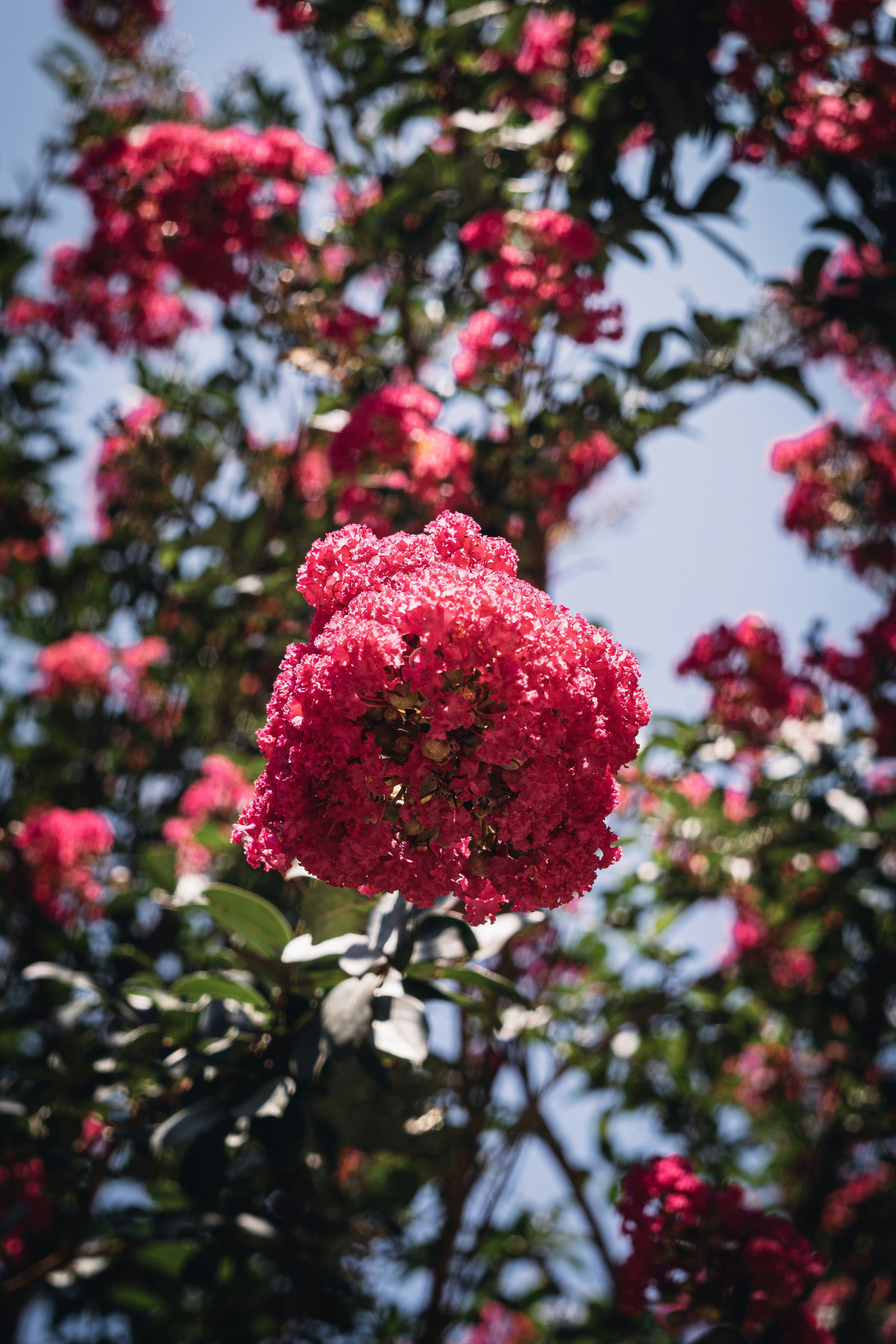How to Propagate Crepe Myrtle: A Beginner’s Guide
Learn how to propagate crepe myrtle trees like a pro with this beginner-friendly guide. From selecting the right cuttings to nurturing new plants, we’ve got you covered with step-by-step instructions and expert tips!
Crepe myrtles (Lagerstroemia) are beloved for their vibrant blooms, hardy nature, and versatility in landscapes. Whether you’re sprucing up your garden or sharing your green thumb with friends, propagating crepe myrtles is a fantastic way to expand your plant collection without breaking the bank. But how do you start? Don’t worry—you’ve landed in the right place!
This guide, aptly titled "How to Propagate Crepe Myrtle: A Beginner’s Guide," will walk you through the nitty-gritty details of propagating these stunning trees. It’s easier than you might think, and with a little patience, you'll soon have healthy, thriving crepe myrtles ready to beautify your yard.
Why Propagate Crepe Myrtle?
Before we dive in, you might wonder, “Why should I propagate crepe myrtles instead of buying new ones?”
Cost-Effective: Propagation is budget-friendly.
Preserve Favorites: Clone a crepe myrtle you adore.
Sustainability: Reduce waste by growing your own plants.
If you’re ready to embrace this eco-friendly, rewarding process, keep reading!
Tools and Materials You’ll Need
To get started, gather these essentials:
Sharp Pruners: For clean, precise cuts.
Rooting Hormone: Speeds up root development.
Pots or Trays: With drainage holes, of course!
Potting Mix: A blend of perlite and peat moss works wonders.
Plastic Bag or Dome: Maintains humidity.
Pro Tip: Have everything on hand before you start. It’s no fun scrambling for supplies halfway through!
When Is the Best Time to Propagate Crepe Myrtles?
Timing is everything in gardening, and crepe myrtle propagation is no exception.
Softwood Cuttings: Late spring to early summer, when growth is fresh and pliable.
Hardwood Cuttings: Late fall or winter, when the tree is dormant.
Each method has its perks. Softwood cuttings root faster but require more care, while hardwood cuttings are more forgiving for beginners.
Step-by-Step: How to Propagate Crepe Myrtle
Now for the main event: the step-by-step guide to propagating crepe myrtle.
1. Choose the Right Cutting
Choosing the right cutting is the foundation of successful crepe myrtle propagation. Start by selecting a healthy branch that shows no signs of disease, pests, or damage, as the quality of your cutting directly impacts its ability to root. For softwood cuttings, which are ideal in late spring or early summer, pick a fresh, green stem that’s 4-6 inches long and flexible. These cuttings root faster but require careful handling to avoid wilting. If you’re working with hardwood cuttings, typically taken in late fall or winter, choose a mature, woody stem that measures 6-8 inches long. Hardwood cuttings are sturdier and can handle less-than-perfect conditions, making them a great choice for beginners. Ensure all tools are clean for the best results.
2. Make the Cut
Making the right cut is crucial for crepe myrtle propagation success. Use sharp, clean pruners to make a precise 45-degree cut just below a node—the spot where leaves attach to the stem. This angle increases the surface area for root development and reduces the risk of rot. After cutting, carefully strip away the leaves from the lower half of the cutting, leaving only 2-3 leaves at the top. Removing excess foliage minimizes water loss and allows the cutting to focus its energy on forming roots. Be gentle during this process to avoid bruising the stem, as damaged tissue can hinder root growth. A clean and well-prepared cutting gives your plant the best chance to thrive in its new environment.
3. Apply Rooting Hormone
To give your crepe myrtle cutting the best chance at developing strong roots, applying rooting hormone is highly recommended. Start by dipping the freshly cut end of your stem into a rooting hormone, whether in powder or gel form, ensuring that the bottom portion is well-coated. Rooting hormone helps stimulate root growth by providing compounds that encourage cell development. However, moderation is key—after dipping, gently shake or tap off any excess hormone. Overapplication can smother the cutting and hinder its ability to absorb moisture and nutrients properly. This balanced application ensures the cutting receives just enough stimulation to promote healthy root formation. With this step complete, your cutting is primed and ready to move on to the planting phase.
4. Plant Your Cutting
Preparing the pot and planting your crepe myrtle cutting correctly is essential for its growth. Begin by filling a pot with a well-draining, moistened potting mix—ideally a blend of perlite and peat moss to provide aeration and retain just the right amount of moisture. Once the soil is ready, gently insert the base of the cutting about 1-2 inches deep, ensuring it’s upright and securely positioned. Proper depth helps the cutting stay stable while its roots begin to form. After inserting, lightly press the soil around the cutting's base to provide extra support and eliminate air pockets, which can dry out the roots. This stable, nutrient-rich environment sets the stage for successful propagation.
5. Create a Humid Environment
Creating the right environment for your crepe myrtle cutting is crucial to encourage root development. After planting the cutting, cover the pot with a clear plastic bag or a propagation dome to create a humid microclimate. This helps retain moisture and mimics the conditions needed for successful rooting. Make sure the plastic doesn’t touch the cutting itself; you can use small stakes to hold it up if necessary. Next, place the pot in a spot with bright, indirect sunlight. Direct sunlight can scorch the cutting and dry out the soil too quickly, while indirect light provides enough energy for growth without causing damage. With these conditions in place, your cutting is well on its way to thriving.
6. Monitor and Wait
Keeping the soil consistently moist is vital for the success of your crepe myrtle cutting. Regularly check the moisture levels by gently touching the soil; it should feel damp but not waterlogged. If it starts to dry out, lightly water to maintain an even level of hydration, as overly dry conditions can hinder root growth. On the flip side, avoid overwatering, which can lead to rot and damage the cutting. While it’s tempting to check for progress frequently, patience is key—roots typically take about 4-8 weeks to develop, depending on conditions and the type of cutting. During this time, focus on providing consistent care, and soon you’ll see the reward of healthy roots forming beneath the soil.
Troubleshooting Common Issues
Propagation isn’t always smooth sailing, and even experienced gardeners encounter a hiccup or two. If your crepe myrtle cuttings begin to wilt or die, overwatering or too much direct sunlight could be the culprit. Adjust by watering less frequently and ensuring the cutting is placed in bright but indirect light. If you notice there’s no root growth after several weeks, don’t give up—start fresh with a new cutting, making sure your tools are clean and your rooting hormone is applied properly. Moldy soil is another common issue, often caused by excessive humidity or poor air circulation. To fix this, slightly reduce the humidity by removing the cover for short periods or increasing ventilation. These adjustments can help turn setbacks into success.
Caring for Your New Crepe Myrtle
Once your crepe myrtle cuttings have successfully rooted, it’s time to transition them into a thriving plant. Start by transplanting the rooted cutting into a larger pot, or if the weather is right, you can plant it directly into your garden. Make sure the location receives at least 6 hours of direct sunlight daily—crepe myrtles thrive in full sun and it encourages healthy growth and vibrant blooms. When it comes to watering, aim for consistent moisture but avoid overwatering. The soil should remain damp, not soggy, to prevent root rot. By providing the right care and conditions, your crepe myrtle will grow strong, eventually producing the beautiful, colorful flowers you’ve been patiently waiting for.
Conclusion
And there you have it—"How to Propagate Crepe Myrtle: A Beginner’s Guide" made simple and approachable! Propagating crepe myrtles isn’t just a practical way to expand your garden and save money—it’s a rewarding experience that allows you to connect with nature and share the joy of gardening. Whether you’re new to this or a seasoned green thumb, following these steps will set you up for success. From choosing the perfect cutting to watching roots develop, each stage is a satisfying milestone. So, gather your tools, roll up your sleeves, and give it a go. There’s no better feeling than nurturing a crepe myrtle cutting into a flourishing plant that enhances your garden with vibrant blooms!
Read next: When Should You Trim Your Crepe Myrtle Trees?
Frequently Asked Questions
Q: Can I propagate crepe myrtles in water?
A: Yes, but soil propagation is more reliable. Water-propagated roots can be fragile and may struggle when transplanted.
Q: How long does it take for crepe myrtle cuttings to root?
A: Softwood cuttings take 4-6 weeks, while hardwood cuttings may take 6-8 weeks or longer.
Q: Do I have to use rooting hormone?
A: It’s not mandatory, but it significantly boosts your success rate.







